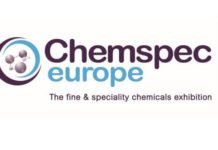AbbVie a global biopharmaceutical company announced the U.S. Food and Drug Administration (FDA) updated the IMBRUVICA® (ibrutinib) Prescribing Information (PI) to include new data from two Phase 3 trials supporting its expanded use in patients with chronic lymphocytic leukemia (CLL) and small lymphocytic lymphoma (SLL).[1].
The label now includes overall survival (OS) results in previously-untreated CLL/SLL patients from the Phase 3 RESONATETM-2 (PCYC-1115) trial.
World pharma today/Press releases/- The IMBRUVICA label has also been updated with safety and efficacy data from the Phase 3 HELIOS (CLL3001) trial assessing the use of IMBRUVICA in combination with bendamustine and rituximab (BR) versus placebo plus BR in relapsed/refractory patients with CLL/SLL. As well, following a review of the November 2015 supplemental New Drug Application (sNDA), the FDA has approved a new IMBRUVICA indication to include the treatment of patients with SLL with or without the deletion of chromosome 17p (del 17p).1 IMBRUVICA is jointly developed and commercialized by Pharmacyclics LLC, an AbbVie Company, and Janssen Biotech, Inc.
The RESONATE-2 trial served as the basis for the March 2016 FDA approval of IMBRUVICA for the first-line treatment of CLL patients. Notably, the OS data now included in the IMBRUVICA PI provide a longer-term update to results published in The New England Journal of Medicine, with a median follow-up of 28.1 months. The label updates based on HELIOS represent the first-ever data demonstrating an improvement in progression-free survival (PFS) and overall response rate (ORR) with IMBRUVICA when combined with BR versus placebo plus BR in patients with relapsed/refractory CLL/SLL.
Jan Burger, M.D., Ph.D., Associate Professor, Department of Leukemia, Division of Cancer Medicine, The University of Texas MD Anderson Cancer Center, Houston, TX said that this update helps to affirm the established efficacy, safety and tolerability of this therapy for treatment of patients with CLL/SLL, both as a monotherapy or in combination with other agents,” said and the RESONATE-2 lead study investigator.* “It reflects the growing body of clinical evidence supporting this therapy as a potential treatment option for people living with CLL/SLL.
“We are pleased the FDA has added the survival data observed with IMBRUVICA as a first-line therapy for CLL to its Prescribing Information and that the indication has been expanded to include patients with SLL. Moreover, the positive results seen in the HELIOS study provide additional evidence supporting the compelling safety and efficacy seen with IMBRUVICA in CLL and SLL patients,” said Danelle James, M.D., M.S., Head of Oncology at Pharmacyclics. “We believe the IMBRUVICA label is very strong for the treatment of certain hematologic malignancies and is now reinforced not only by data evaluating its use as a single agent, but also in combination with other commonly used chemotherapy regimens.”
About the RESONATE-2 Study
RESONATE-2 is a Pharmacyclics-sponsored, randomized, multi-center, open-label, Phase 3 study which enrolled 269 treatment-naïve patients with CLL/SLL aged 65 years or older in the U.S., EU and other regions. Patients were randomized to receive either IMBRUVICA 420 mg orally, once daily until progression or unacceptable toxicity, or chlorambucil on days 1 and 15 of each 28-day cycle for up to 12 cycles. The starting dose for chlorambucil in Cycle 1 was 0.5 mg/kg and was increased based on tolerability in Cycle 2 by increments of 0.1 mg/kg to a maximum of 0.8 mg/kg. The primary endpoint of the study was PFS as assessed by an Independent Review Committee (IRC) according to the International Workshop on Chronic Lymphocytic Leukemia (iWCLL) 2008 criteria, with clarification for treatment-related lymphocytosis. OS was a key secondary endpoint assessed in the study.
In addition to existing positive PFS results seen in the RESONATE-2 study, a supplemental overall survival analysis, which included 41% of the patients in the chlorambucil arm who crossed over to receive IMBRUVICA therapy after progressing, demonstrated a statistically significant 56% reduction in the risk of death after a median follow-up of 28.1 months (HR 0.44 [95% CI, 0.21, 0.92]).
Results from RESONATE-2 were presented in an oral session at the American Society of Hematology (ASH) meeting in Orlando, FL in December 2015 and simultaneously published in The New England Journal of Medicine. The results were also part of the official press program at ASH 2015.
About the HELIOS Study
HELIOS is a Janssen-sponsored, randomized, multi-center, double-blind, Phase 3 study which enrolled 578 CLL/SLL patients who had received at least one prior systemic therapy. Patients were randomized to receive IMBRUVICA or placebo, once daily continuing until disease progression or unacceptable toxicity with six cycles of BR. The study met its primary endpoint, demonstrating improved PFS.
Results showed the combination of IMBRUVICA plus BR was associated with an 80% reduction in the risk of progression or death (HR=0.20 [95% CI, 0.15, 0.28]) versus placebo plus BR; the median PFS was not reached in the IMBRUVICA plus BR arm, compared to 13.3 months in the placebo plus BR arm (95% CI, 11.3, 13.9).
Data from an interim analysis of HELIOS were presented during the official press program at the American Society of Clinical Oncology (ASCO) meeting in Chicago, IL in May 2015. The results were also published in The Lancet Oncology in December 2015.
IMBRUVICA Safety in CLL/SLL
Warnings and Precautions include hemorrhage, infections, cytopenias, atrial fibrillation, hypertension, second primary malignancies, tumor lysis syndrome and embryo-fetal toxicity. Four to 10% of patients receiving IMBRUVICA in the studies supporting the CLL indications (PCYC-1102, RESONATETM [PCYC-1112], RESONATE-2 [PCYC-1115] and HELIOS [CLL3001]) discontinued treatment due to adverse reactions (ARs). These included pneumonia, hemorrhage, atrial fibrillation, rash and neutropenia (1% each). ARs leading to dose reduction occurred in approximately 6% of patients.
The ARs from the RESONATE-2 trial reported in the IMBRUVICA U.S. PI reflect exposure to IMBRUVICA with a median duration of 17.4 months versus a median exposure to chlorambucil of 7.1 months. The most common ARs (?20%) of any Grade in the RESONATE-2 trial for IMBRUVICA were diarrhea (42%), musculoskeletal pain* (36%), cough (22%) and rash* (21%). The most common Grade 3/4 AR (>5%) was pneumonia* (8%).
The ARs from the HELIOS trial reported in the IMBRUVICA U.S. PI reflect exposure to IMBRUVICA + BR with a median duration of 14.7 months versus a median exposure to placebo + BR of 12.8 months. The most common ARs (?20%) of any Grade in the HELIOS trial for IMBRUVICA plus BR were neutropenia* (66%), diarrhea (36%), thrombocytopenia* (34%), rash* (32%), musculoskeletal pain* (29%), pyrexia (25%) and bruising* (20%). The most common Grade 3/4 ARs (>5%) were neutropenia* (61%), thrombocytopenia* (16%) and hypertension* (5%).
About CLL/SLL
The prevalence of CLL is approximately 115,000 patients in the U.S.[2] with approximately 15,000 newly diagnosed patients every year.[3] SLL is a slow-growing lymphoma biologically similar to CLL in which too many immature white blood cells cause lymph nodes to become larger than normal.[4] CLL/SLL are predominately a disease of the elderly, with a median age of 71 at diagnosis.3
About IMBRUVICA
IMBRUVICA is a first-in-class, oral, once-daily therapy that inhibits a protein called Bruton’s tyrosine kinase (BTK). BTK is a key signaling molecule in the B-cell receptor signaling complex that plays an important role in the survival and spread of malignant B cells.1,[5] IMBRUVICA blocks signals that tell malignant B cells to multiply and spread uncontrollably. [1]
IMBRUVICA is approved to treat patients with CLL/SLL, patients with mantle cell lymphoma (MCL) who have received at least one prior therapy and patients with Waldenström’s macroglobulinemia. Accelerated approval was granted for the MCL indication based on overall response rate. Continued approval for this indication may be contingent upon verification of clinical benefit in confirmatory trials. [1]
IMBRUVICA was one of the first medicines to receive U.S. FDA approval via the new Breakthrough Therapy Designation pathway.
IMBRUVICA is being studied alone and in combination with other treatments in several blood and solid tumor cancers. More than 6,000 patients have been treated with IMBRUVICA in clinical trials. Currently, 14 Phase 3 trials have been initiated with IMBRUVICA and more than 90 trials are registered on www.clinicaltrials.gov.
About AbbVie
AbbVie is a global, research-based biopharmaceutical company formed in 2013 following separation from Abbott Laboratories. The company’s mission is to use its expertise, dedicated people and unique approach to innovation to develop and market advanced therapies that address some of the world’s most complex and serious diseases. Together with its wholly-owned subsidiary, Pharmacyclics, AbbVie employs more than 28,000 people worldwide and markets medicines in more than 170 countries. For further information on the company and its people, portfolio and commitments, please visit www.abbvie.com. Follow @abbvie on Twitter or view careers on our Facebook or LinkedIn page.
*Disclaimer: Dr. Jan Burger served as the primary investigator of this Pharmacyclics-sponsored clinical study. He has served as an unpaid advisor to both Pharmacyclics and Janssen in developing the compound ibrutinib. Dr. Burger does not have a financial interest in either company.
IMBRUVICA is a registered trademark of Pharmacyclics LLC
[1] IMBRUVICA US Prescribing Information, May 2016.[2] IMS Database [Data on File]
[3] American Cancer Society. What are the key statistics for chronic lymphocytic leukemia? Available from: http://www.cancer.org/cancer/leukemia-chroniclymphocyticcll/detailedguide/leukemia-chronic-lymphocytic-key-statistics. Accessed May 2016.
[4] American Cancer Society. Leukemia – Chronic Lymphocytic. Available from: http://www.cancer.org/acs/groups/cid/documents/webcontent/003111-pdf.pdf. Accessed May 2016.
[5] Genetics Home Reference. Isolated growth hormone deficiency. Available from: http://ghr.nlm.nih.gov/condition/isolated-growth-hormone-deficiency. Accessed May 2016.
Contact(s)
Media
Ilke LimoncuPhone: 669-224-1836
or Investors
Liz SheaPhone: 847-935-2211
or Physicians
U.S. Medical Information
Phone: 877-877-3536


























